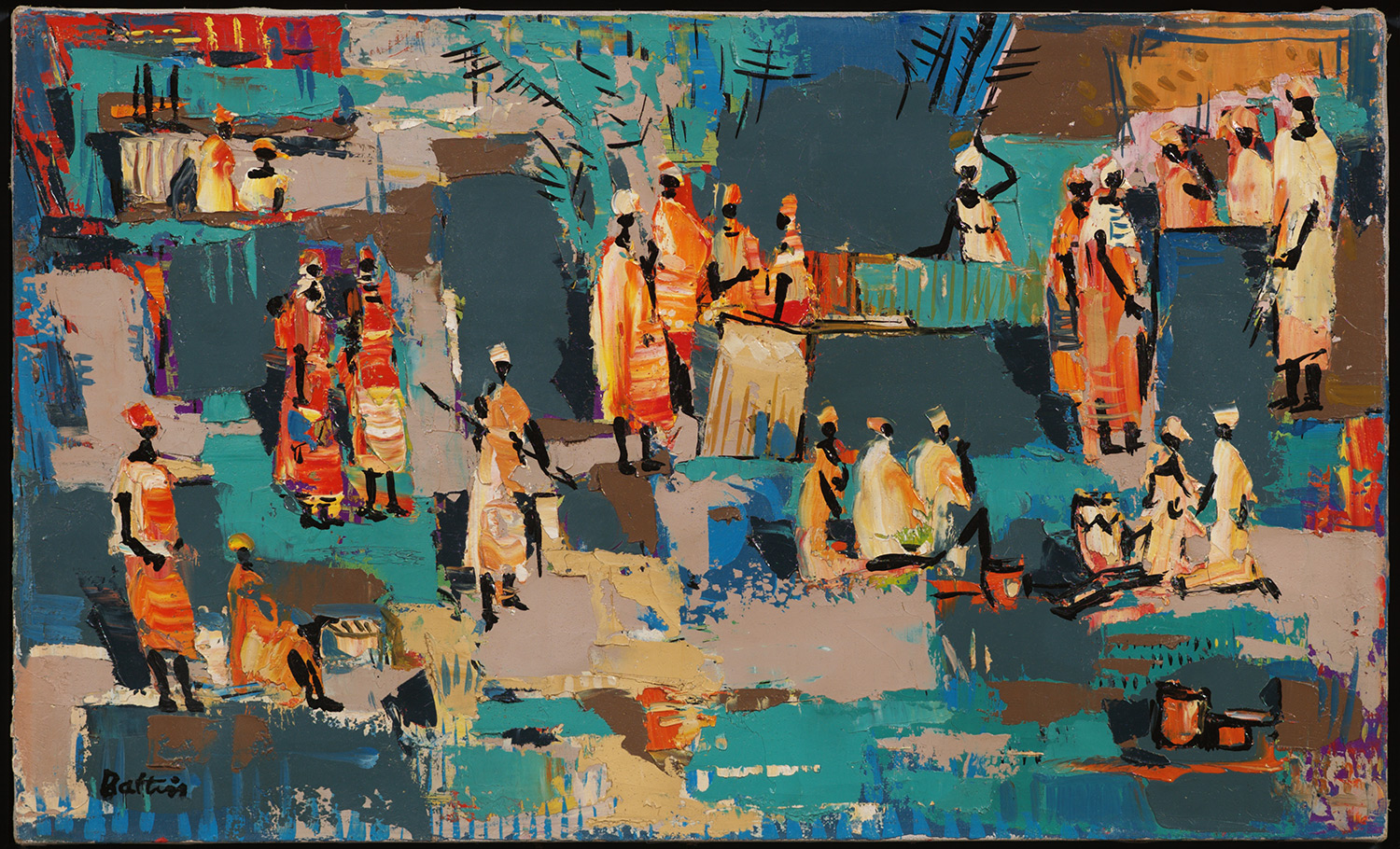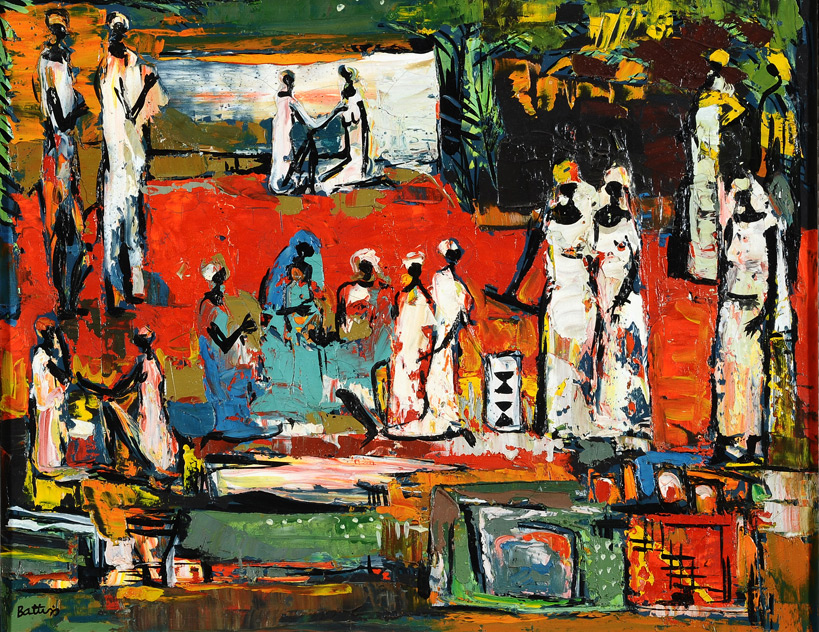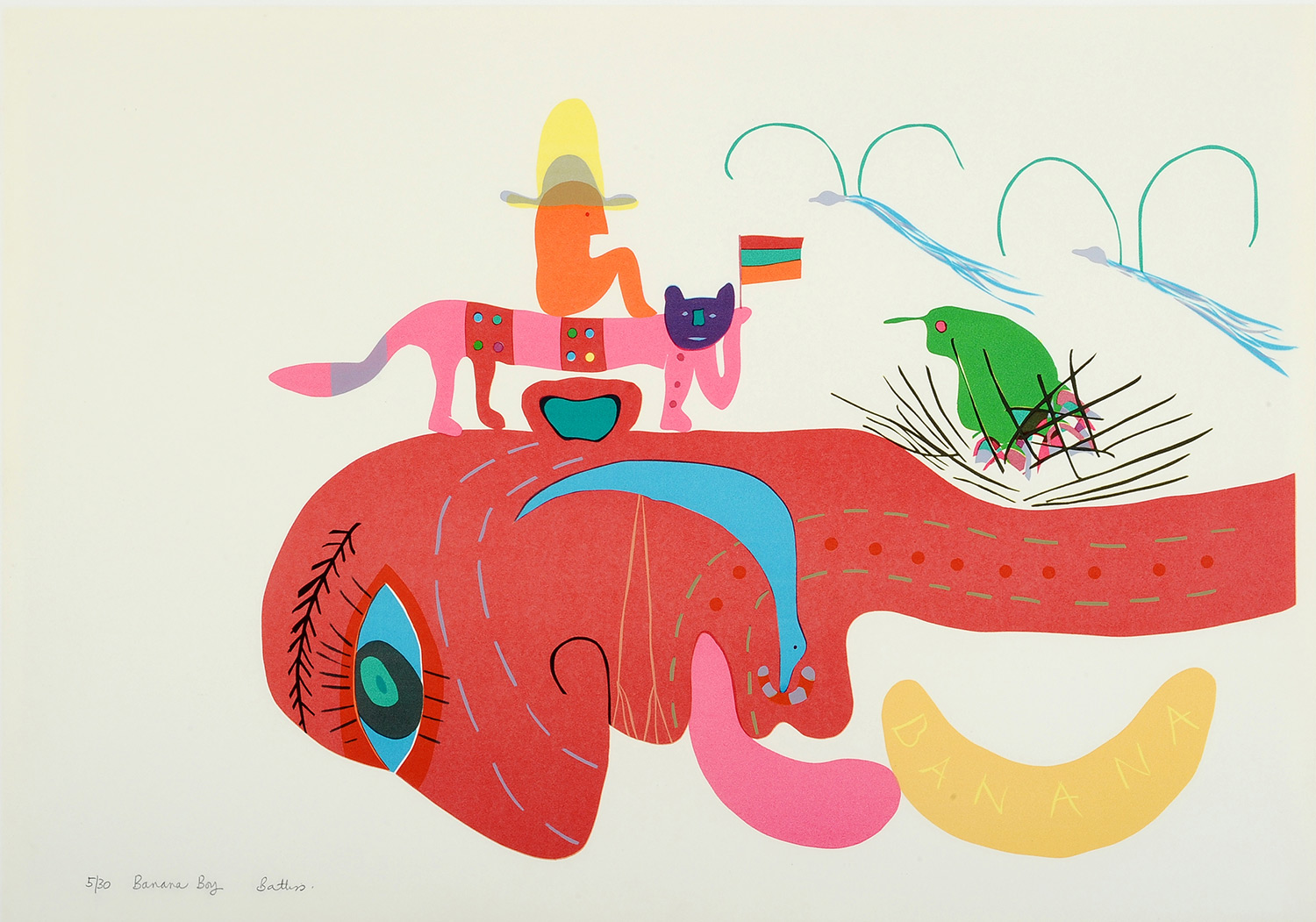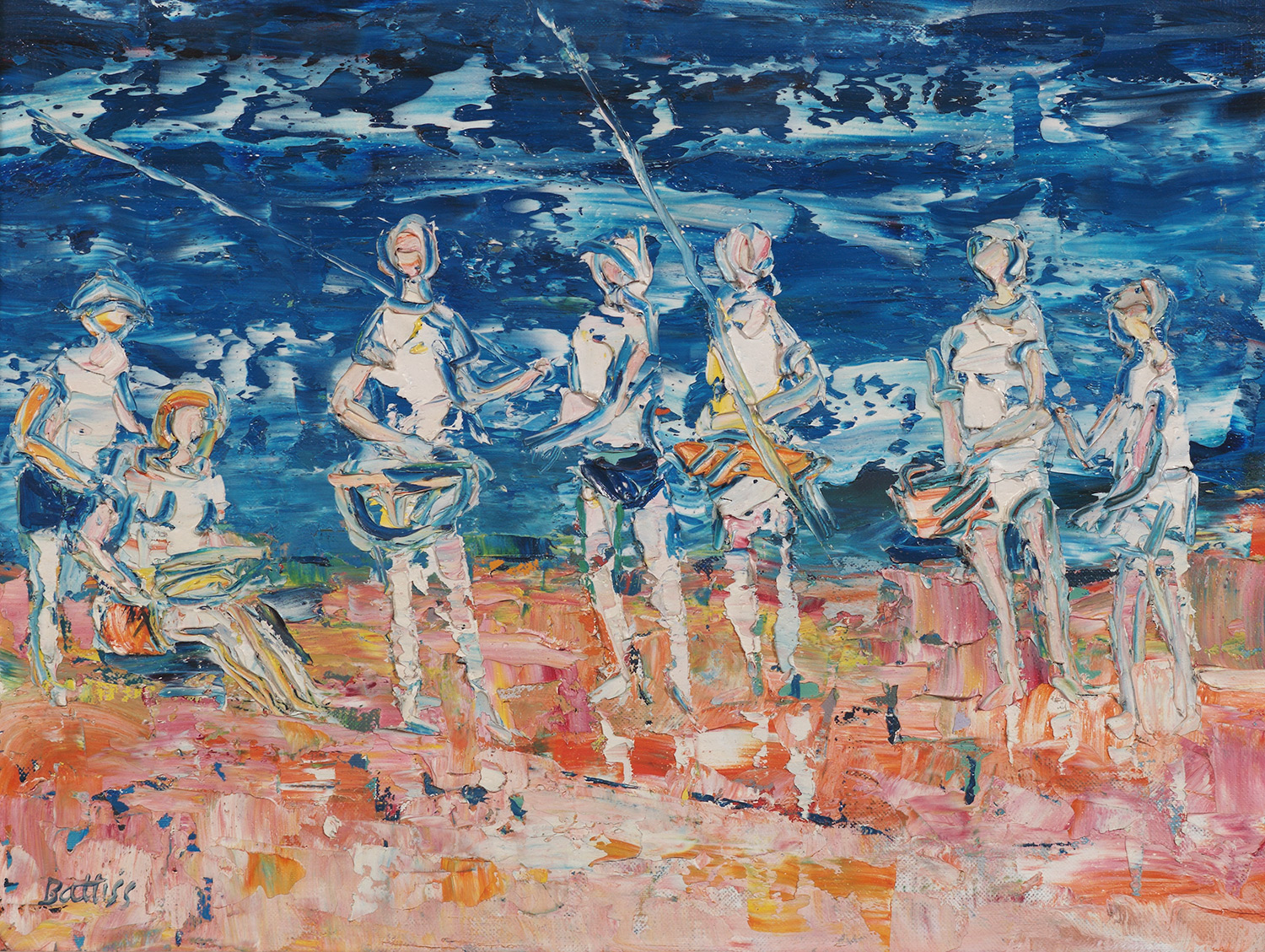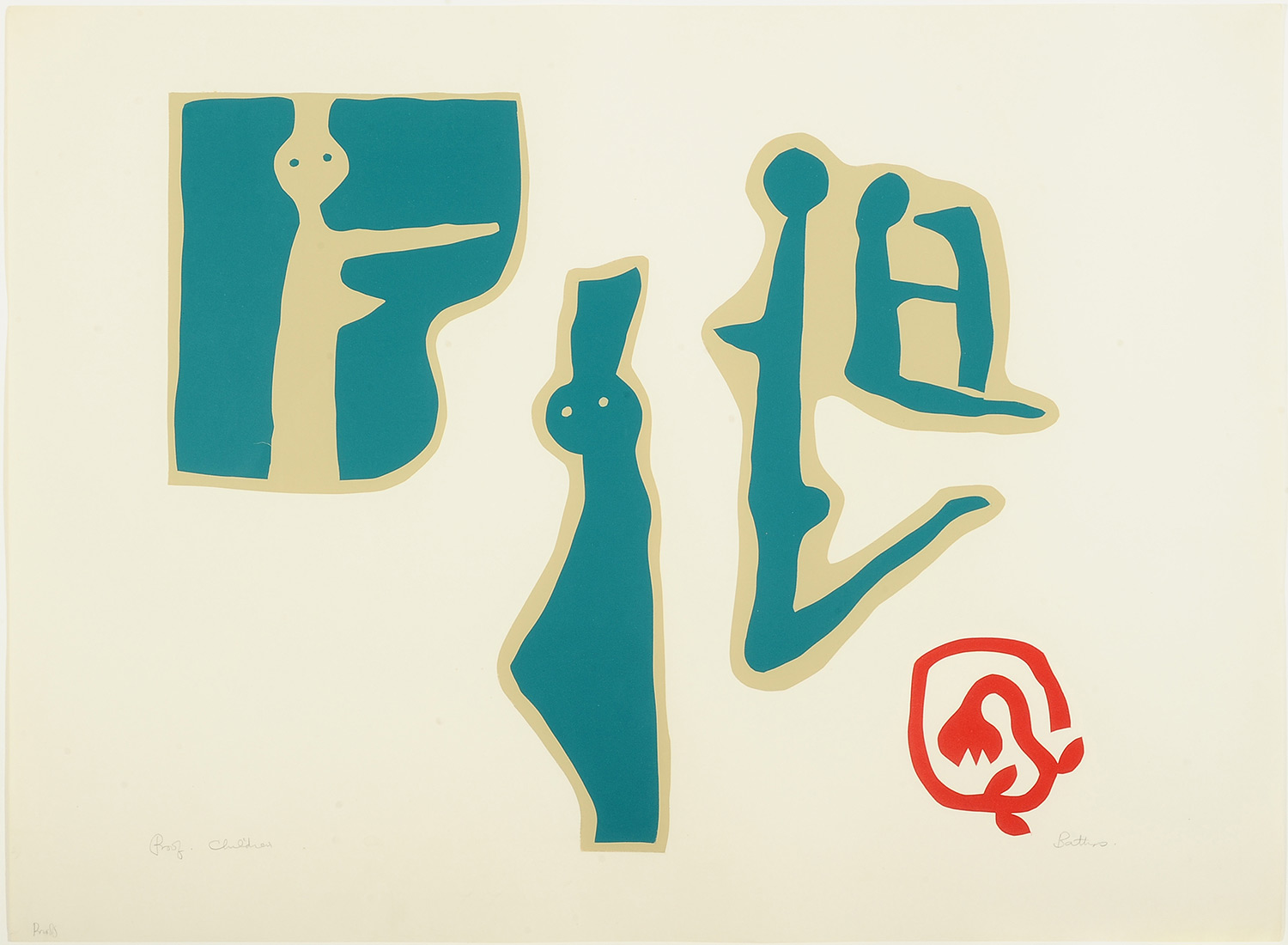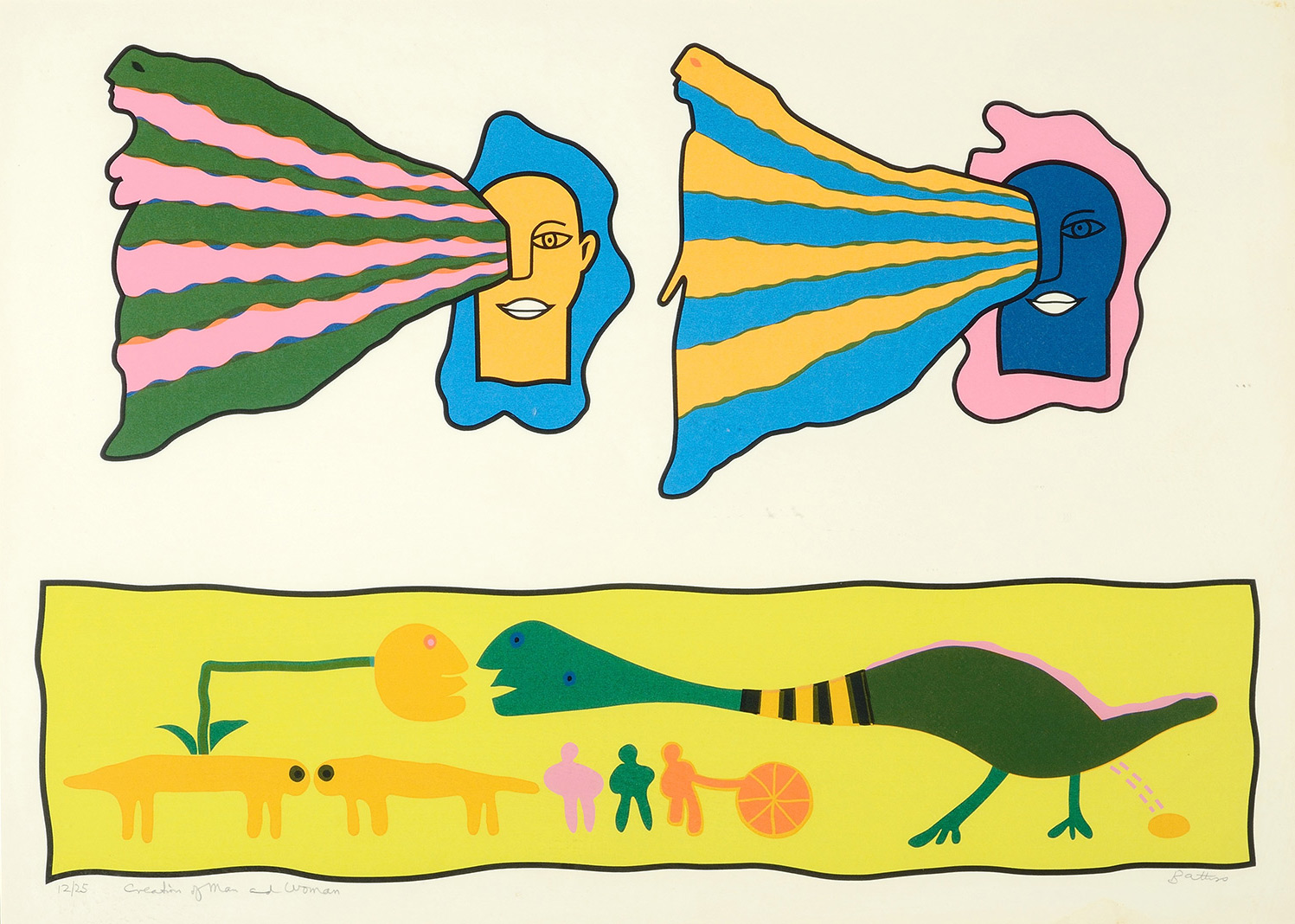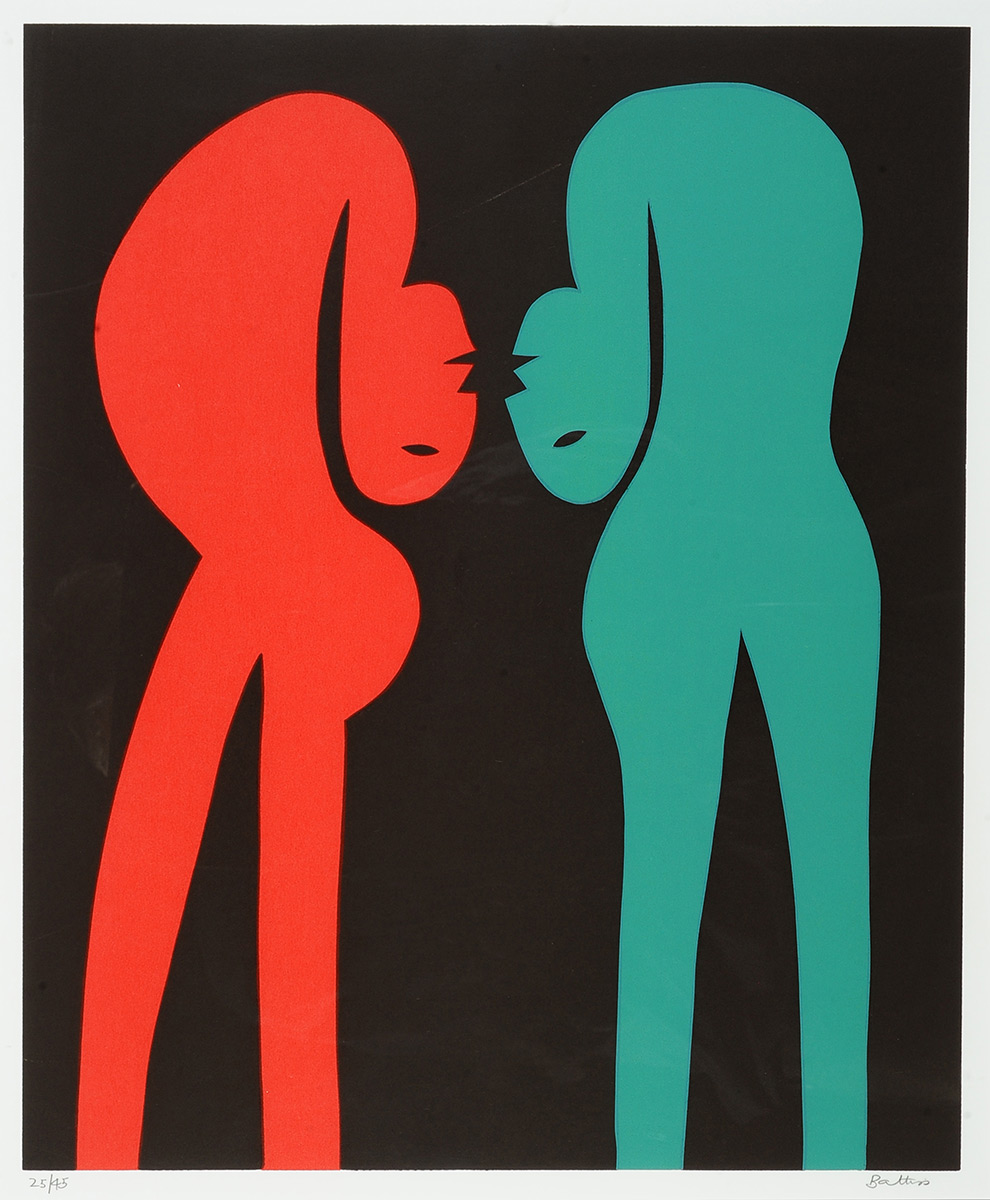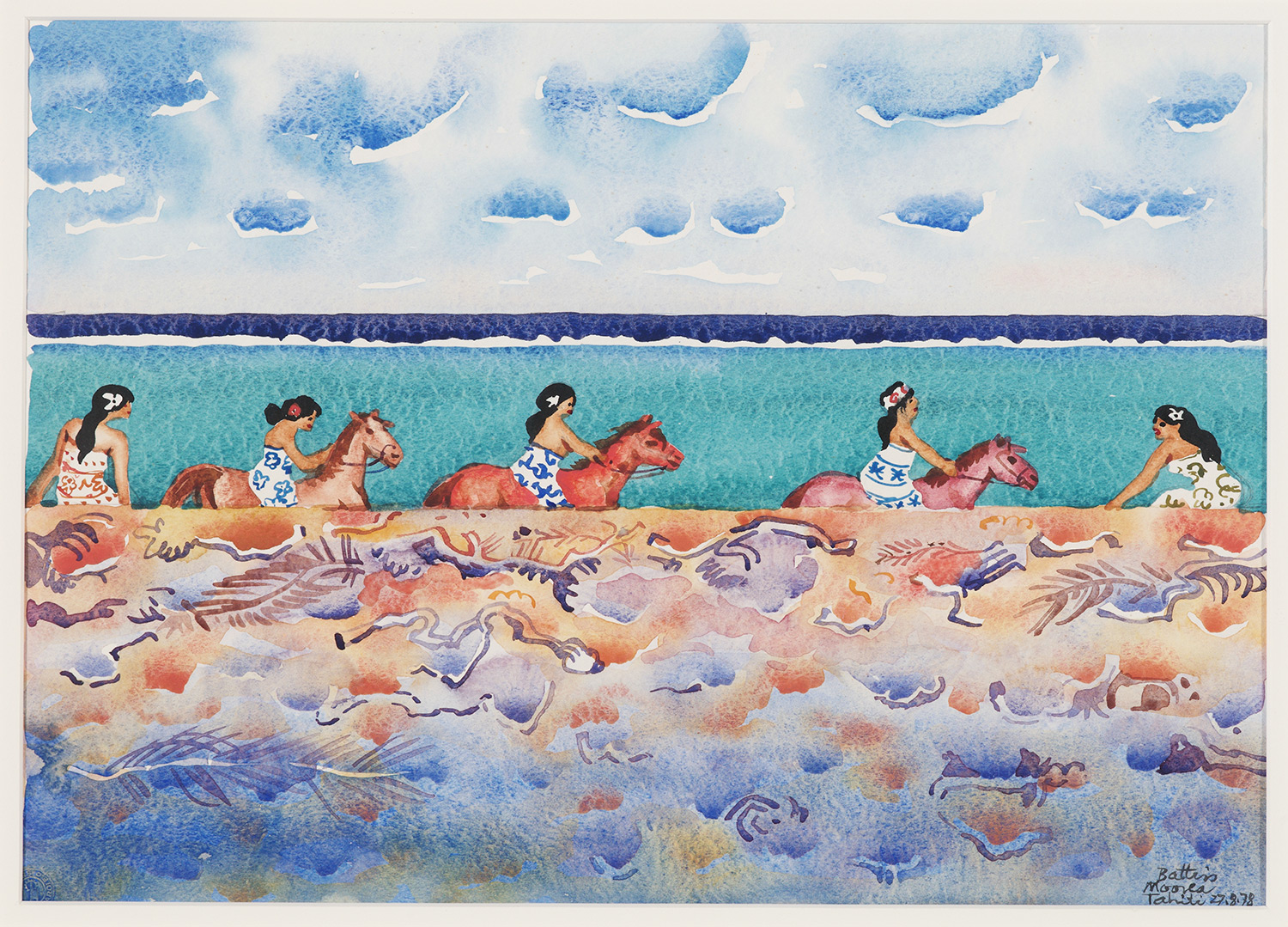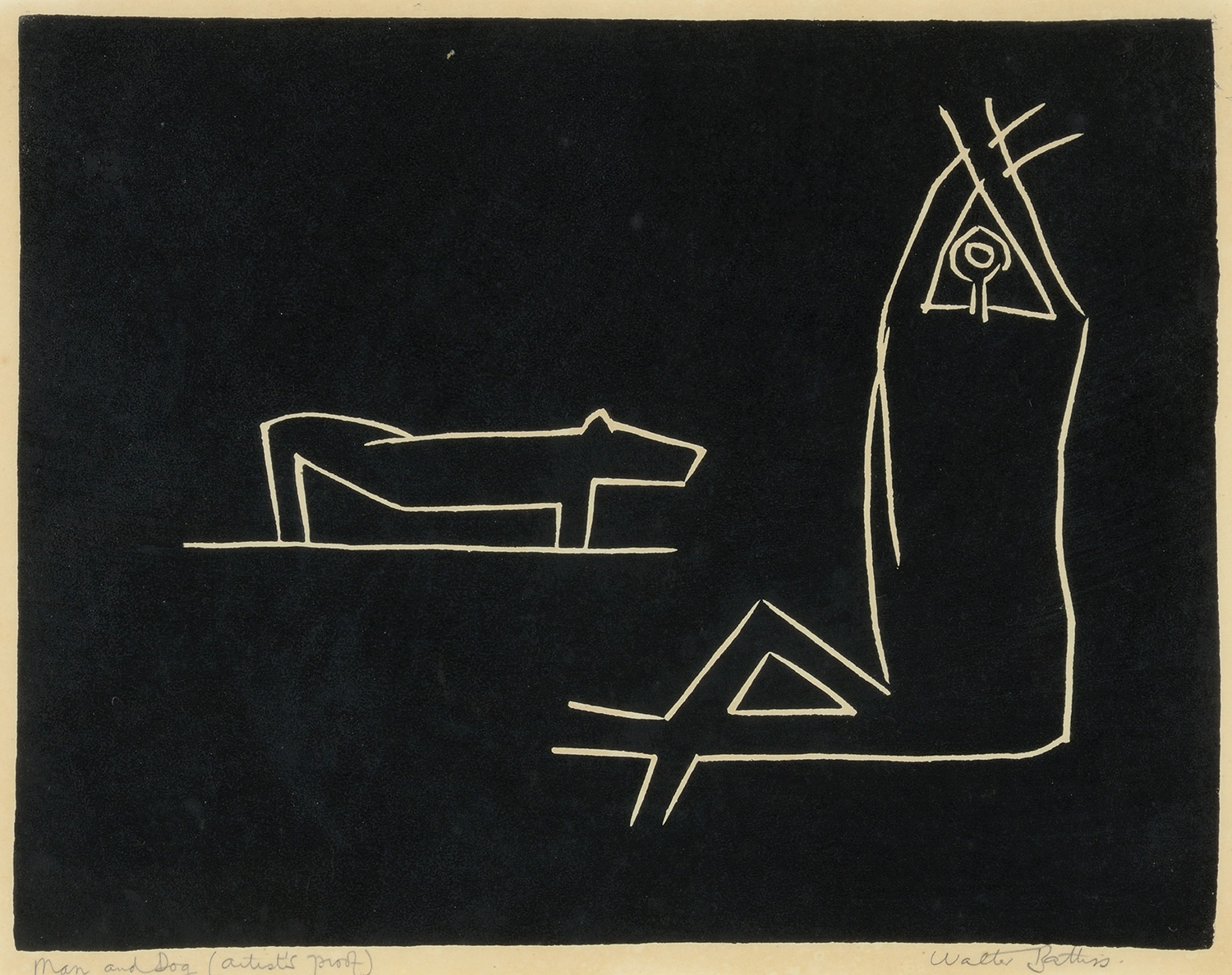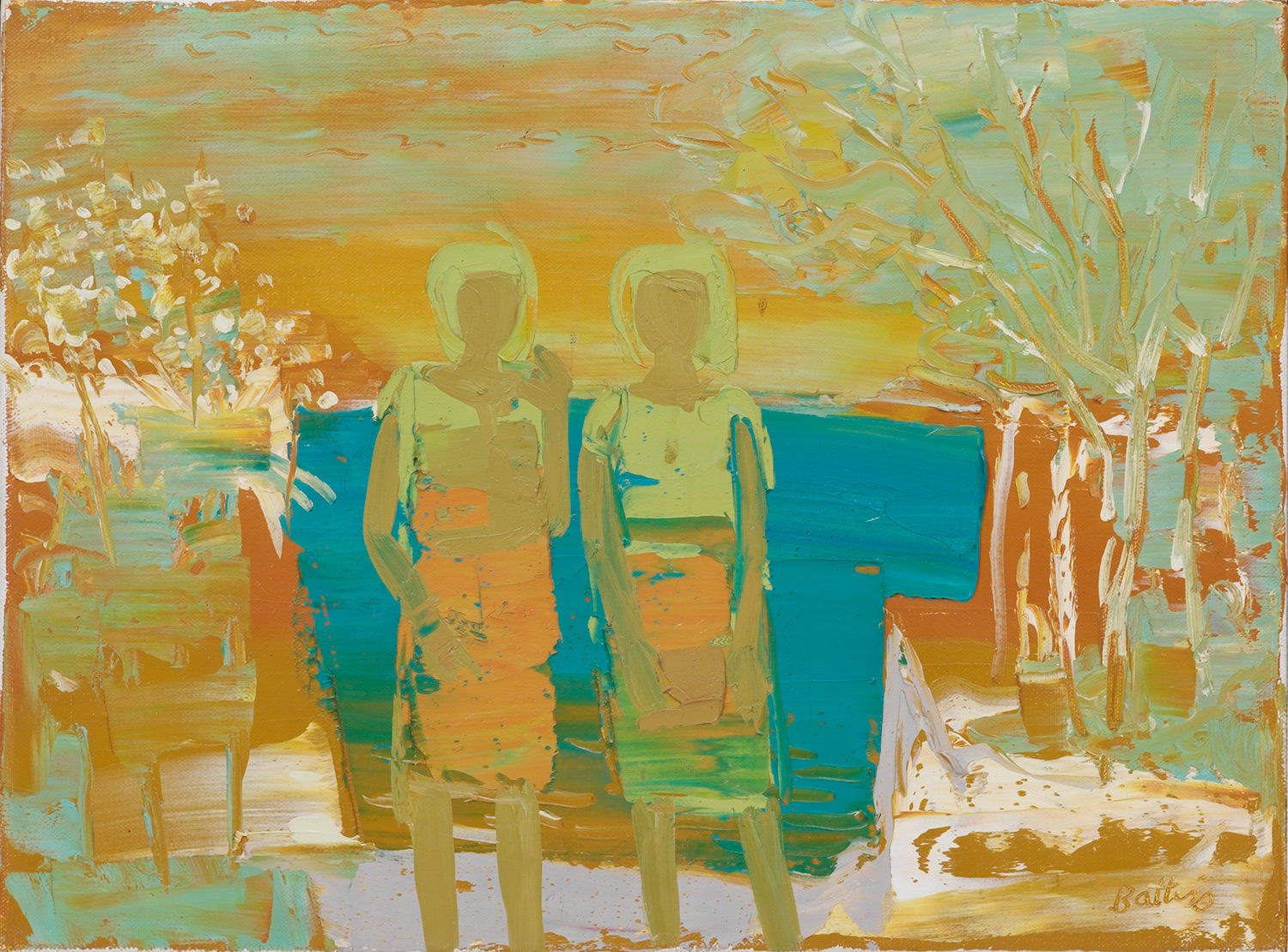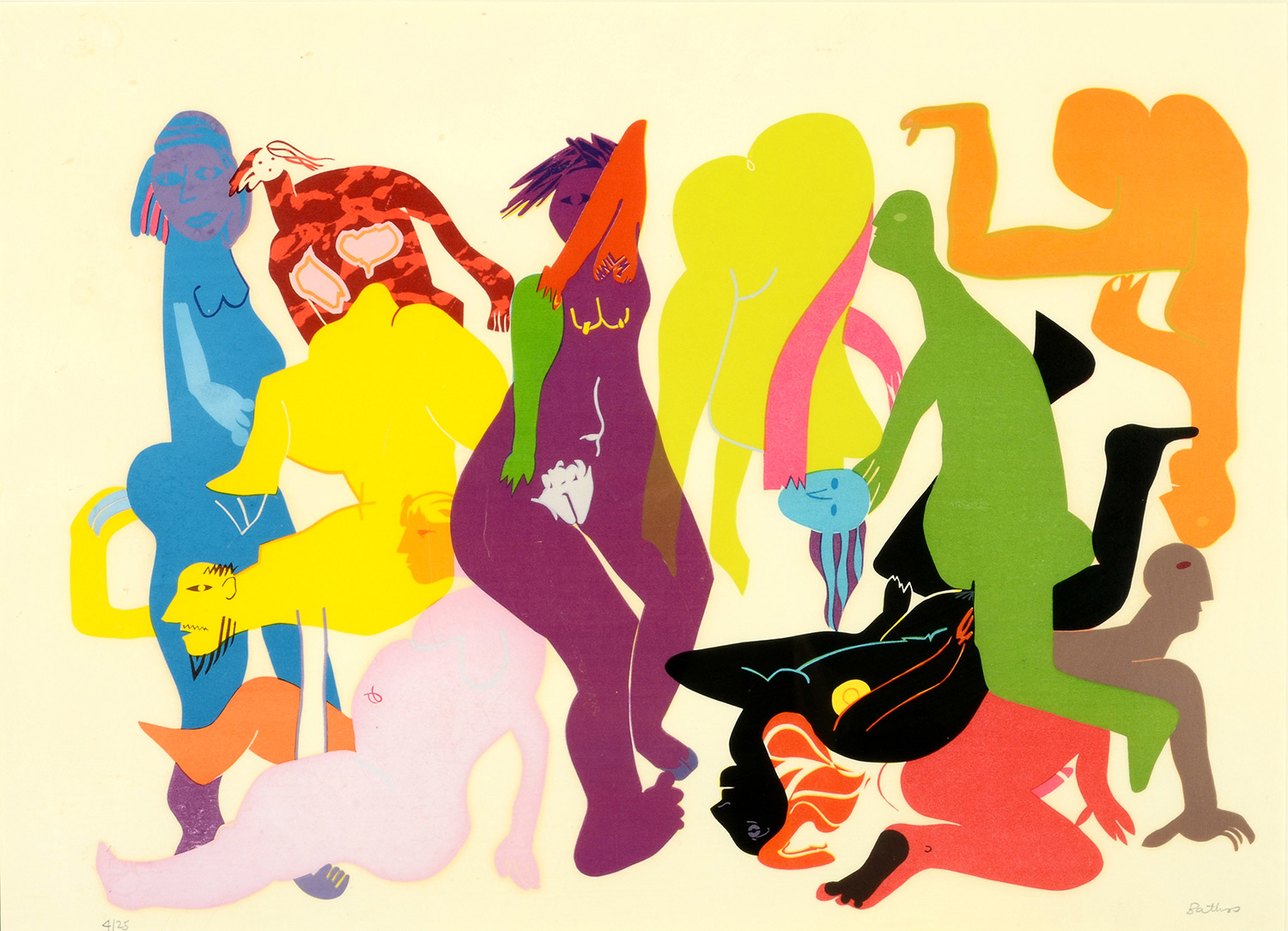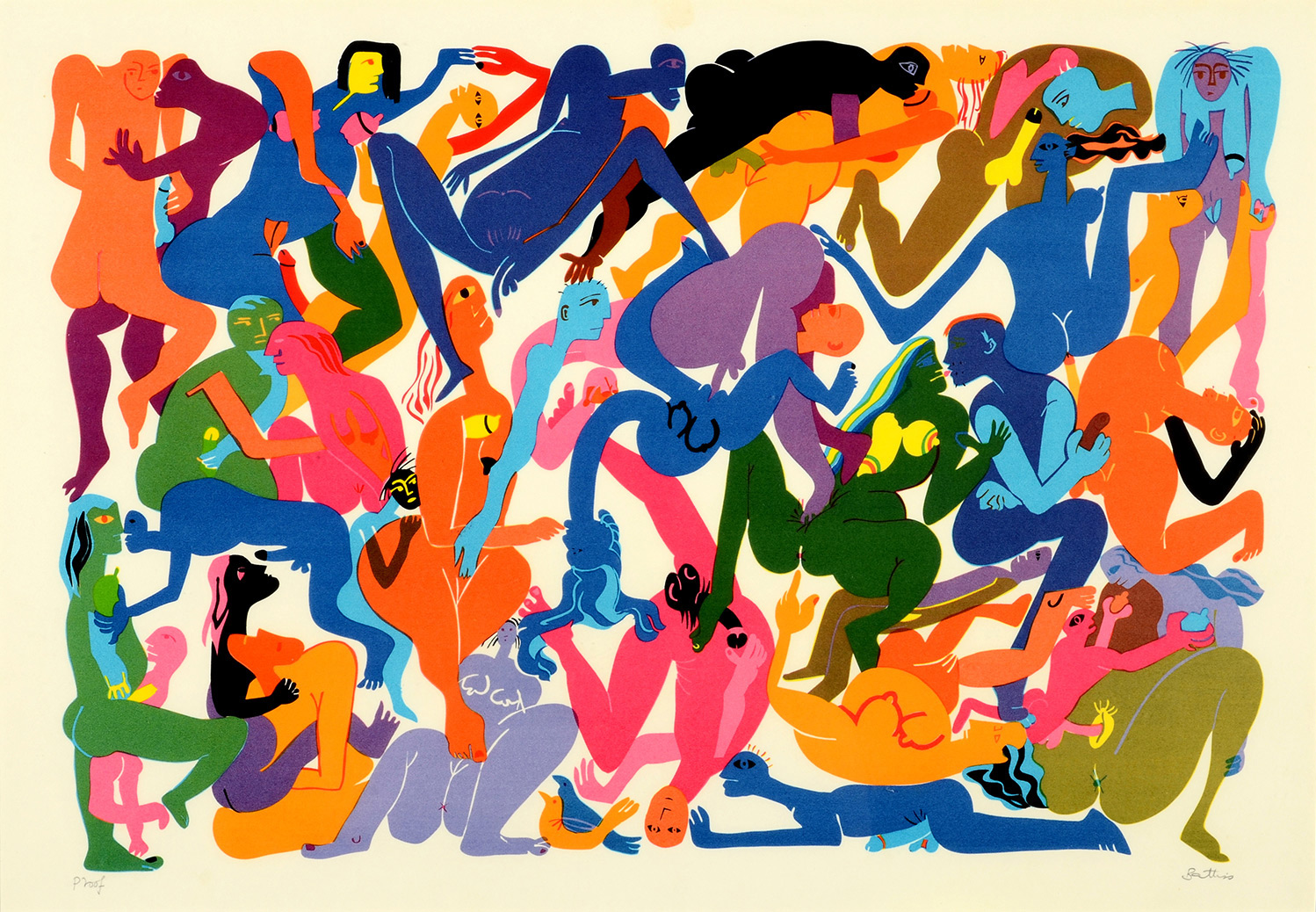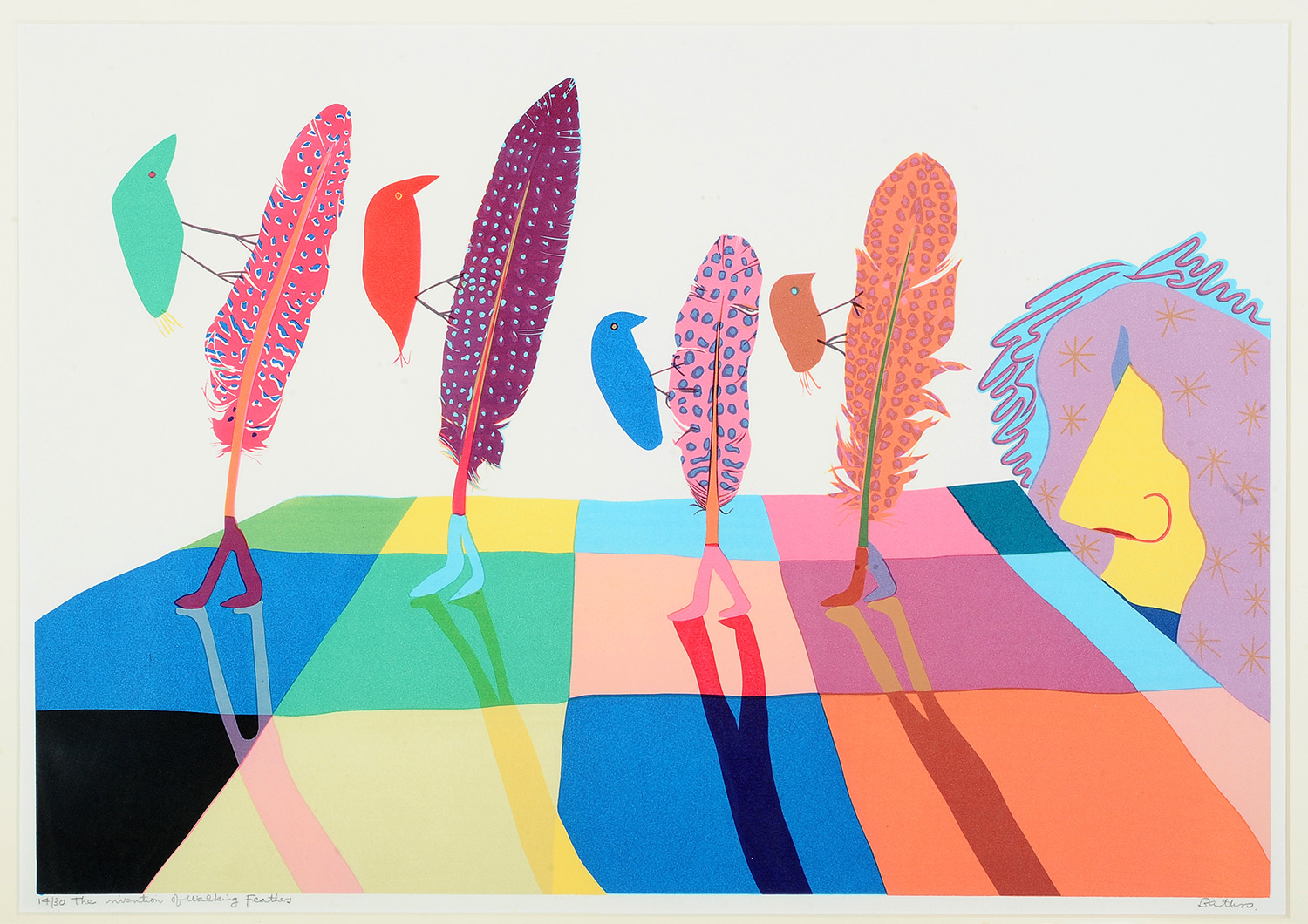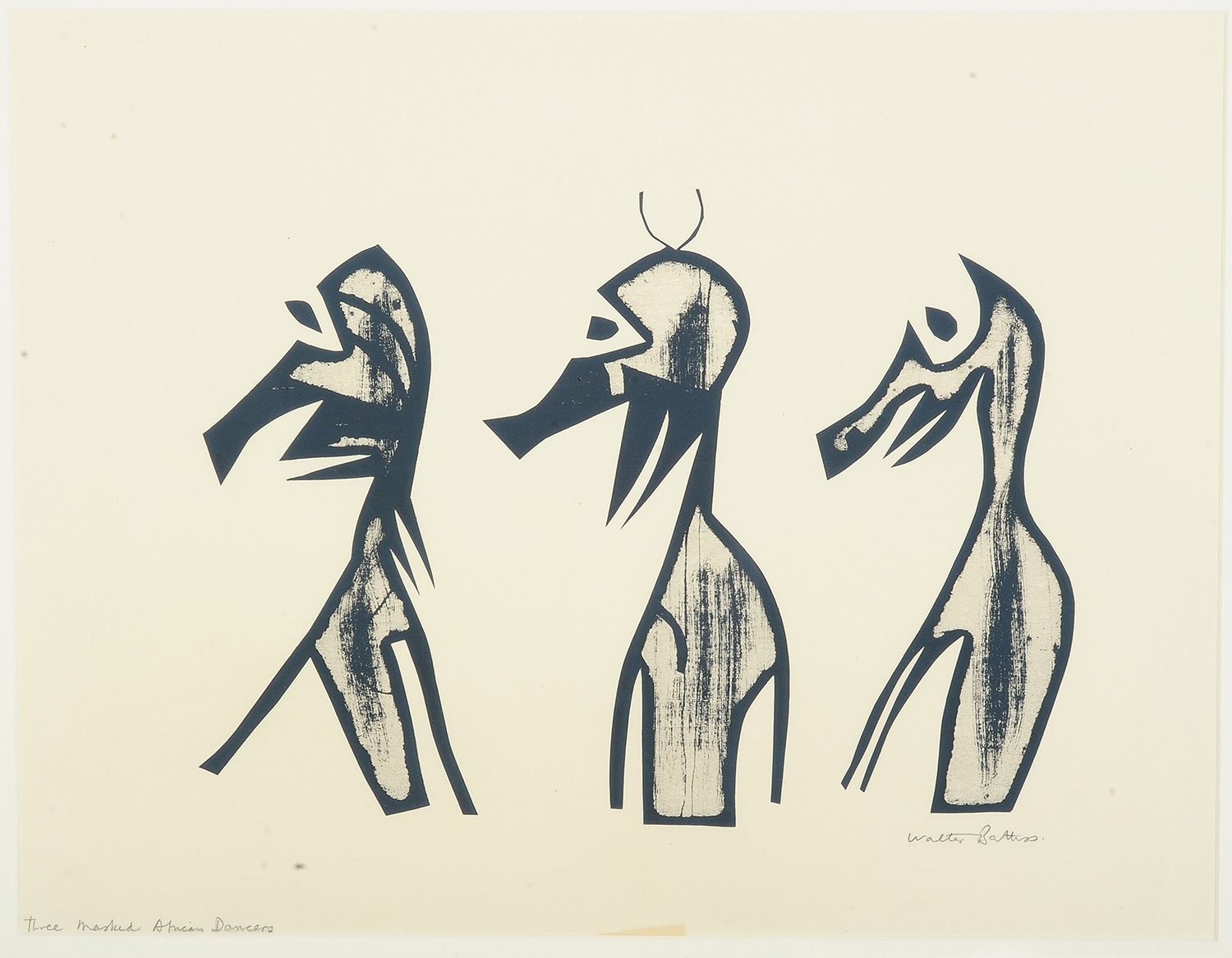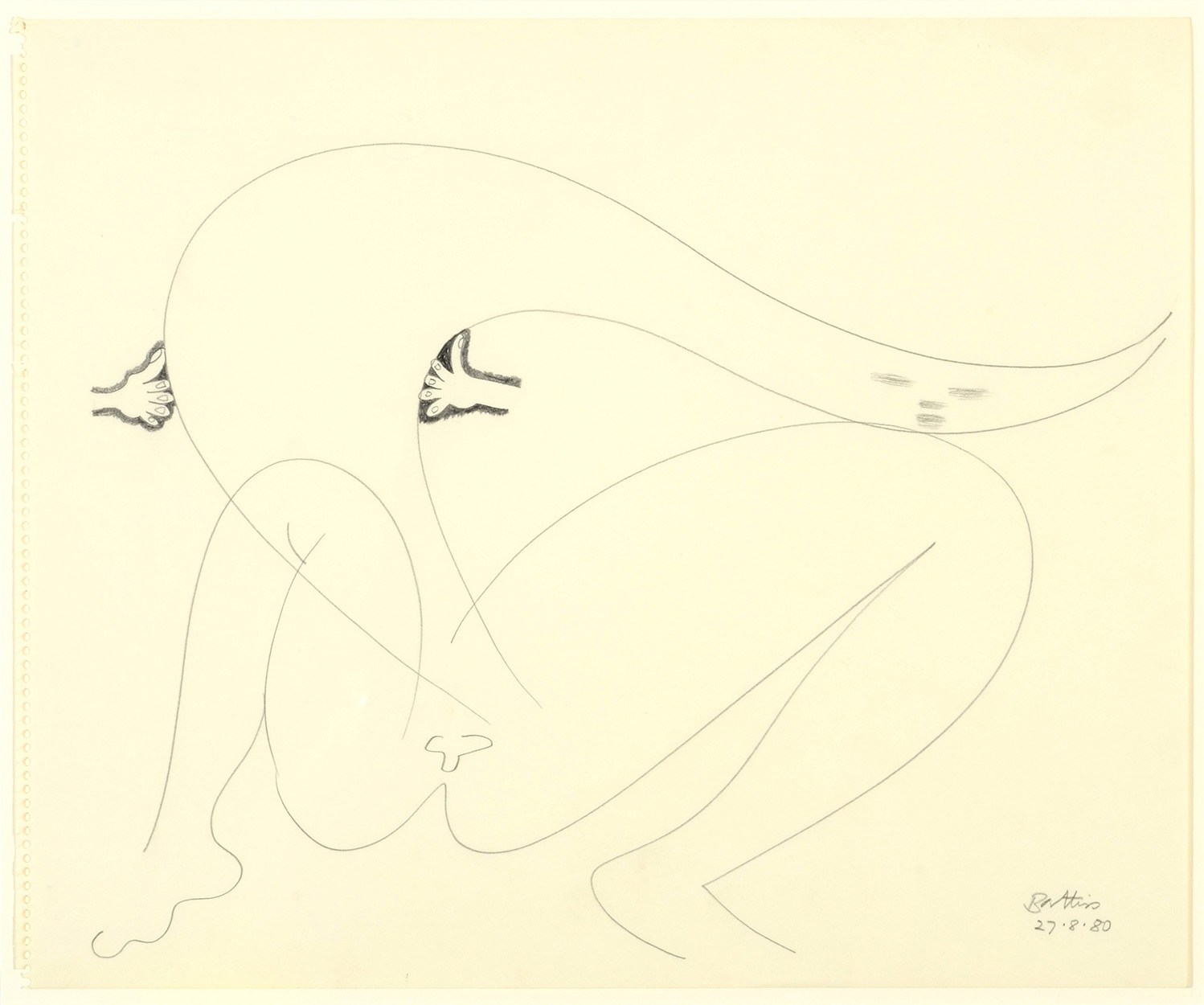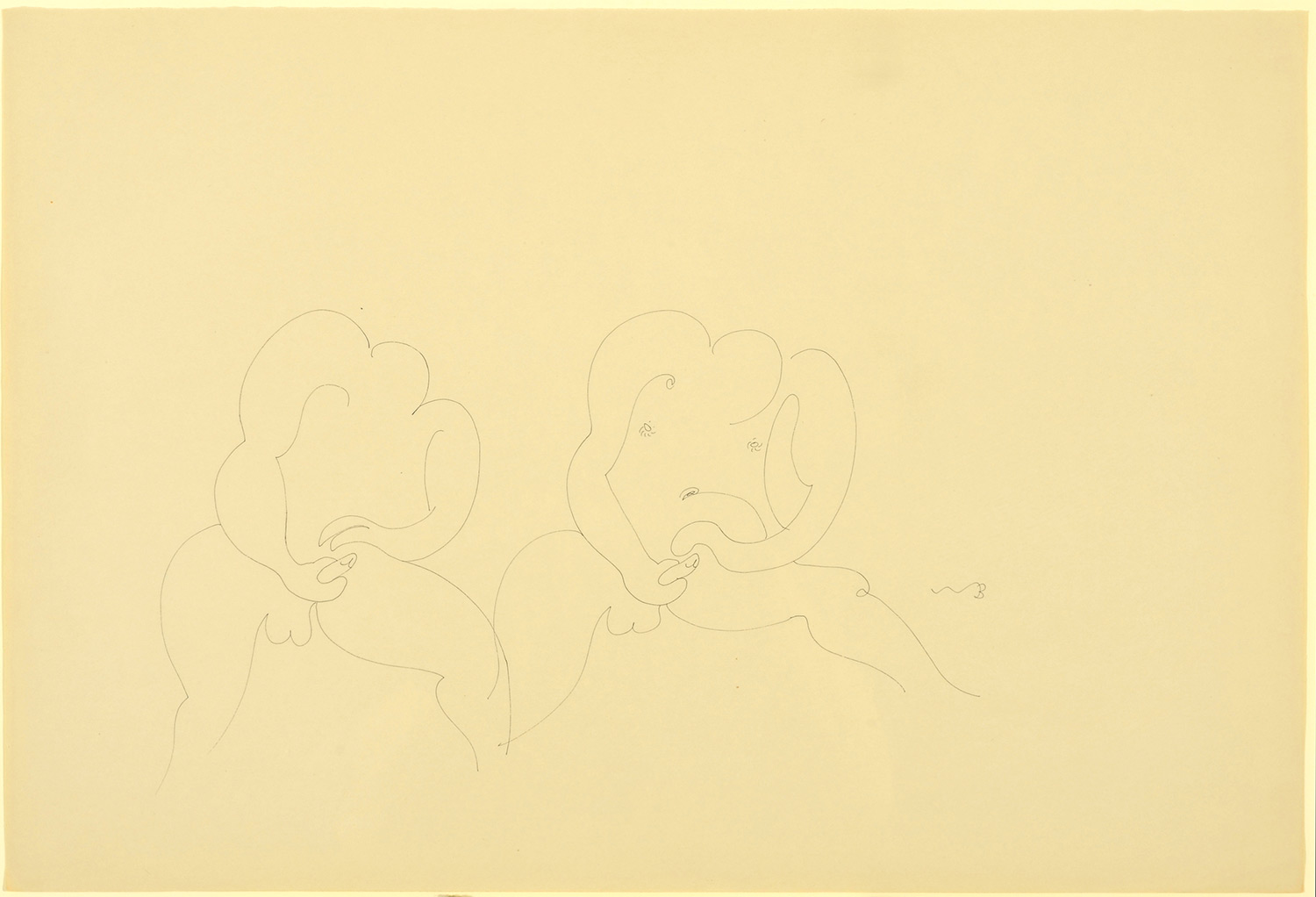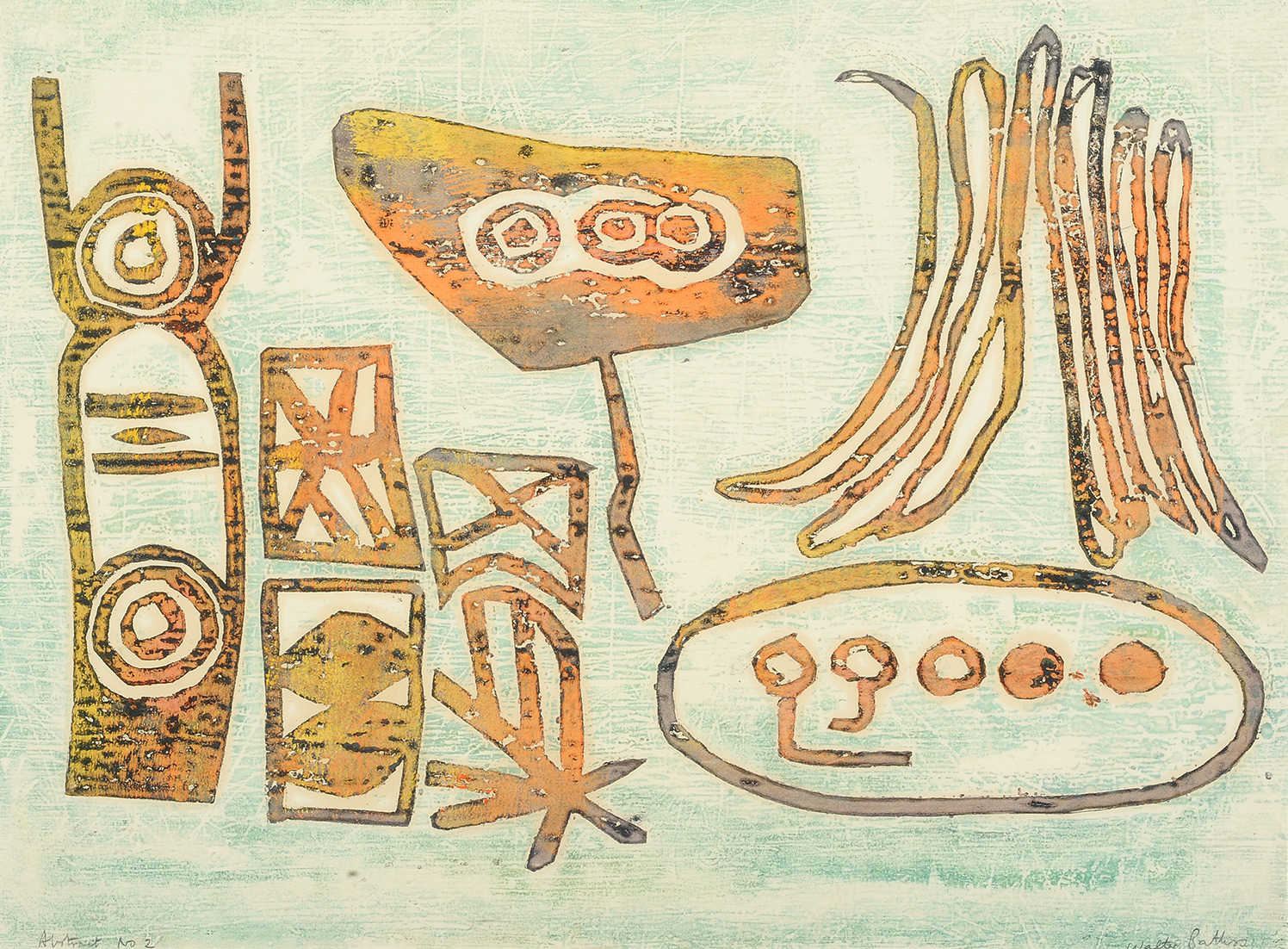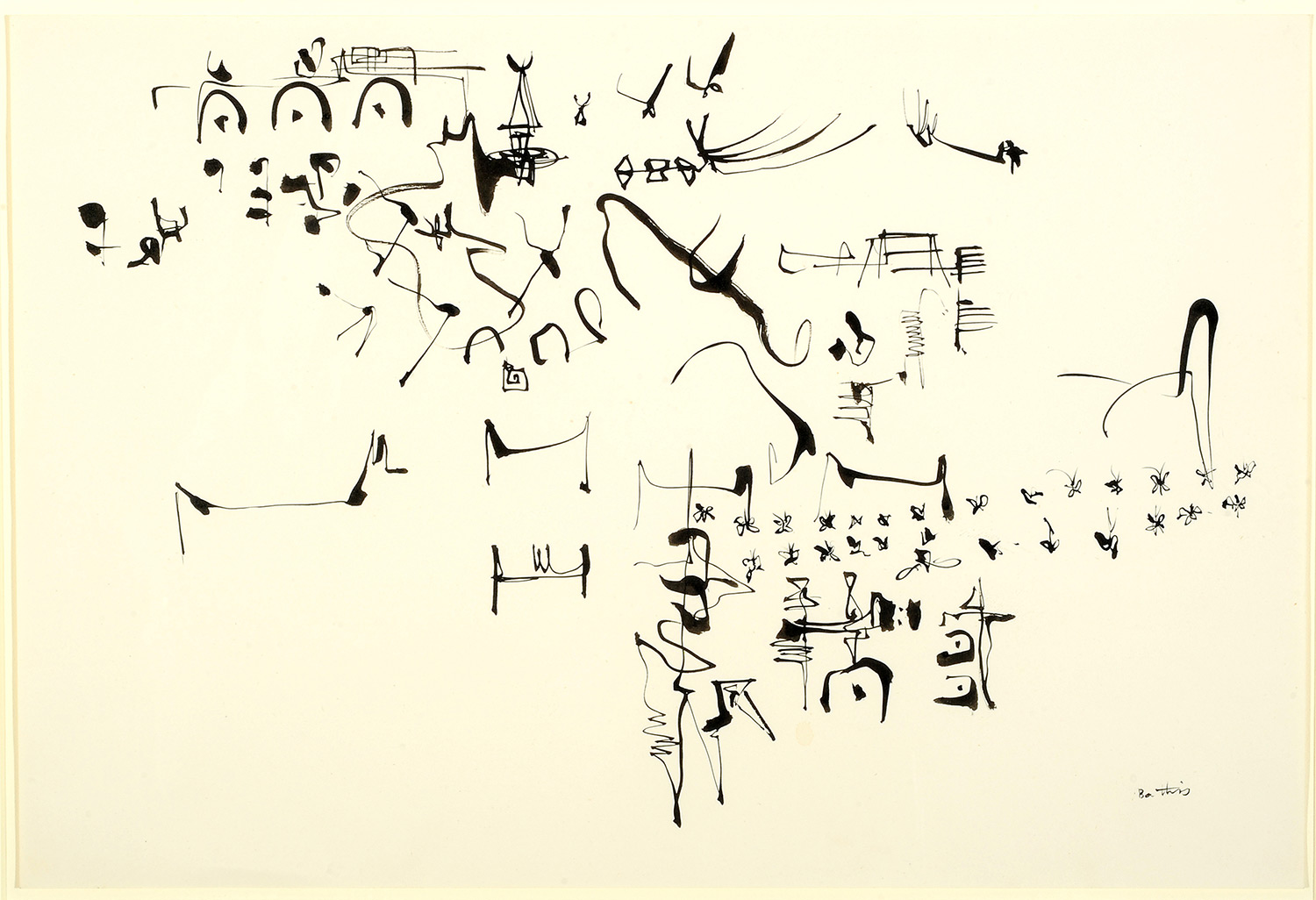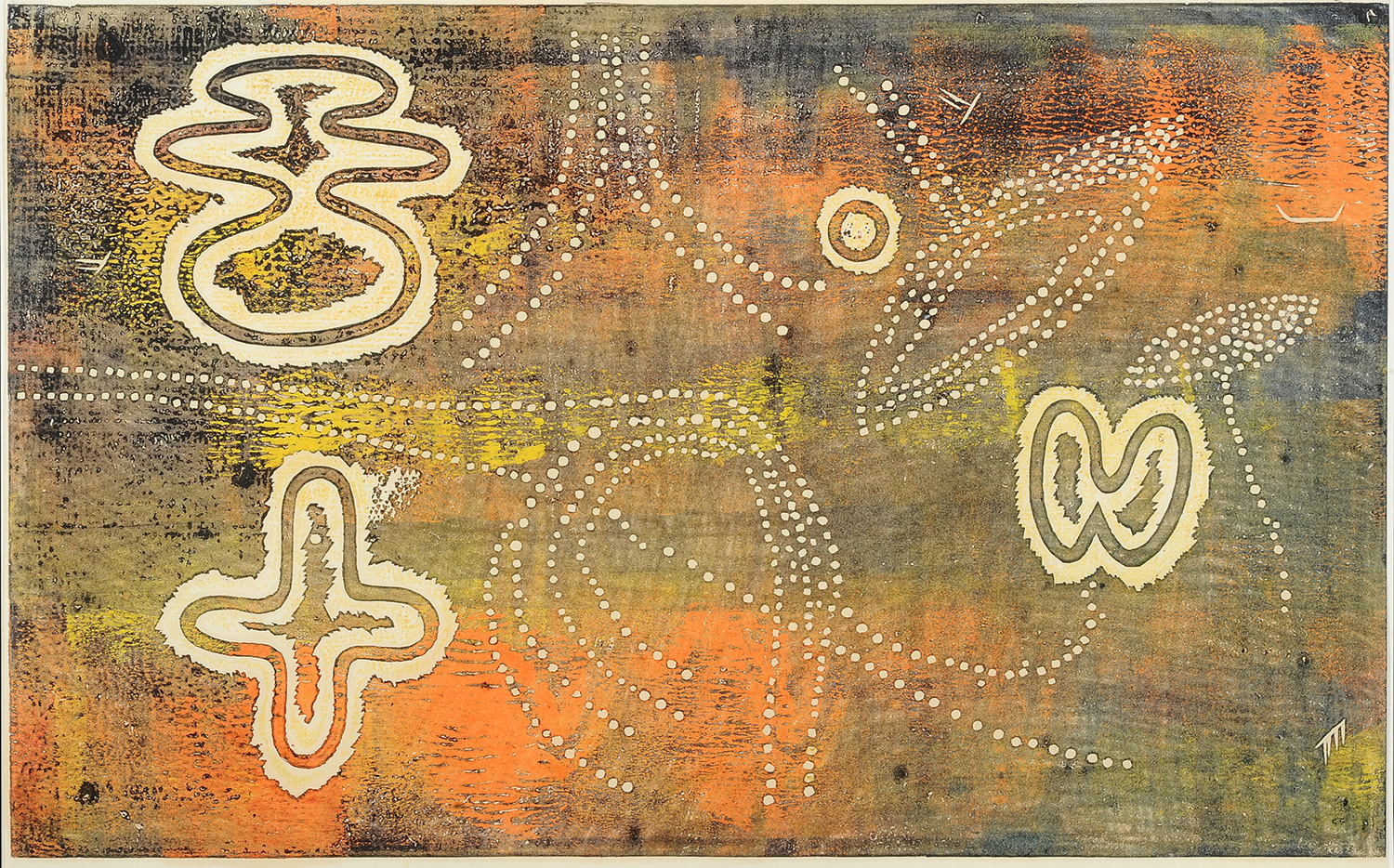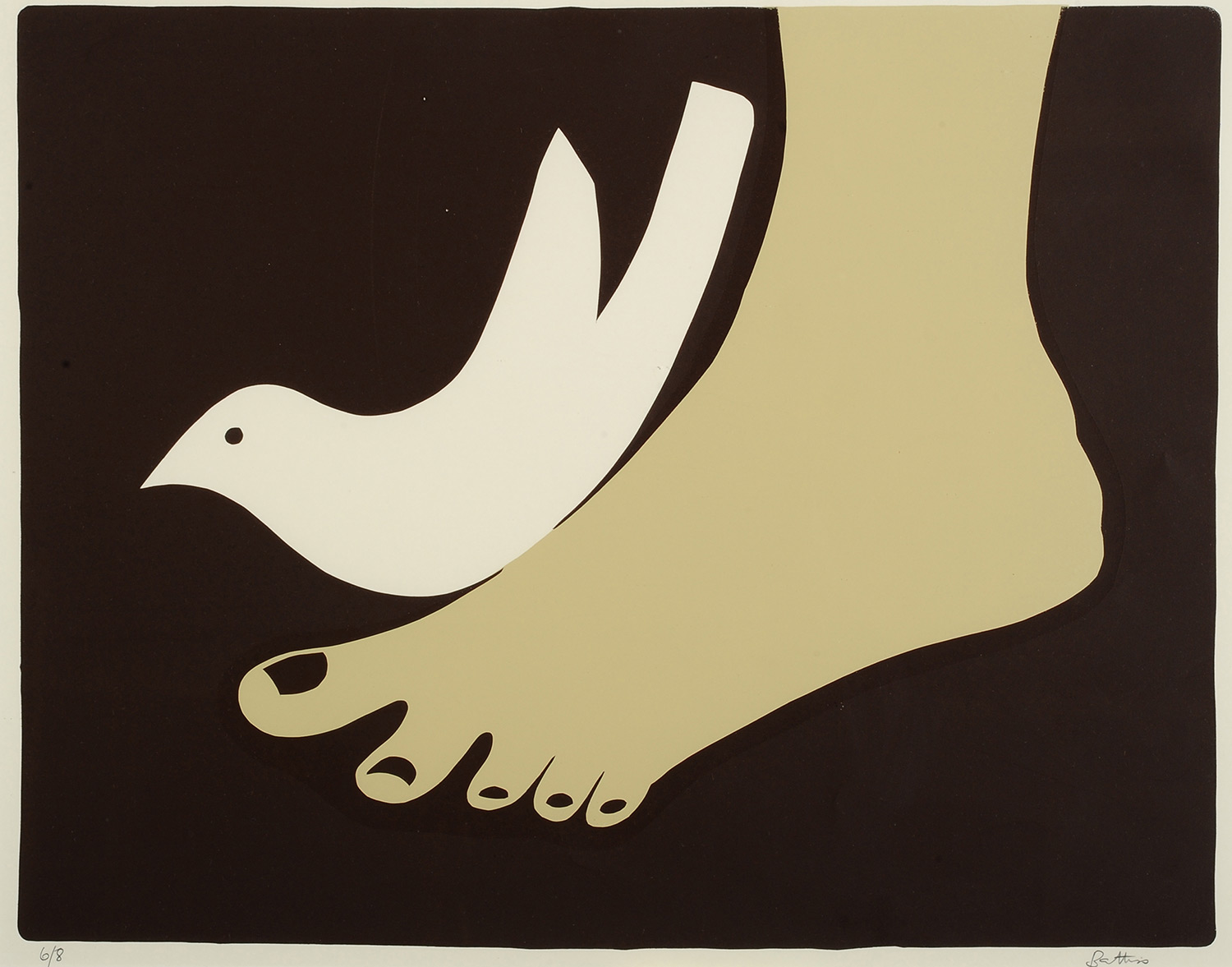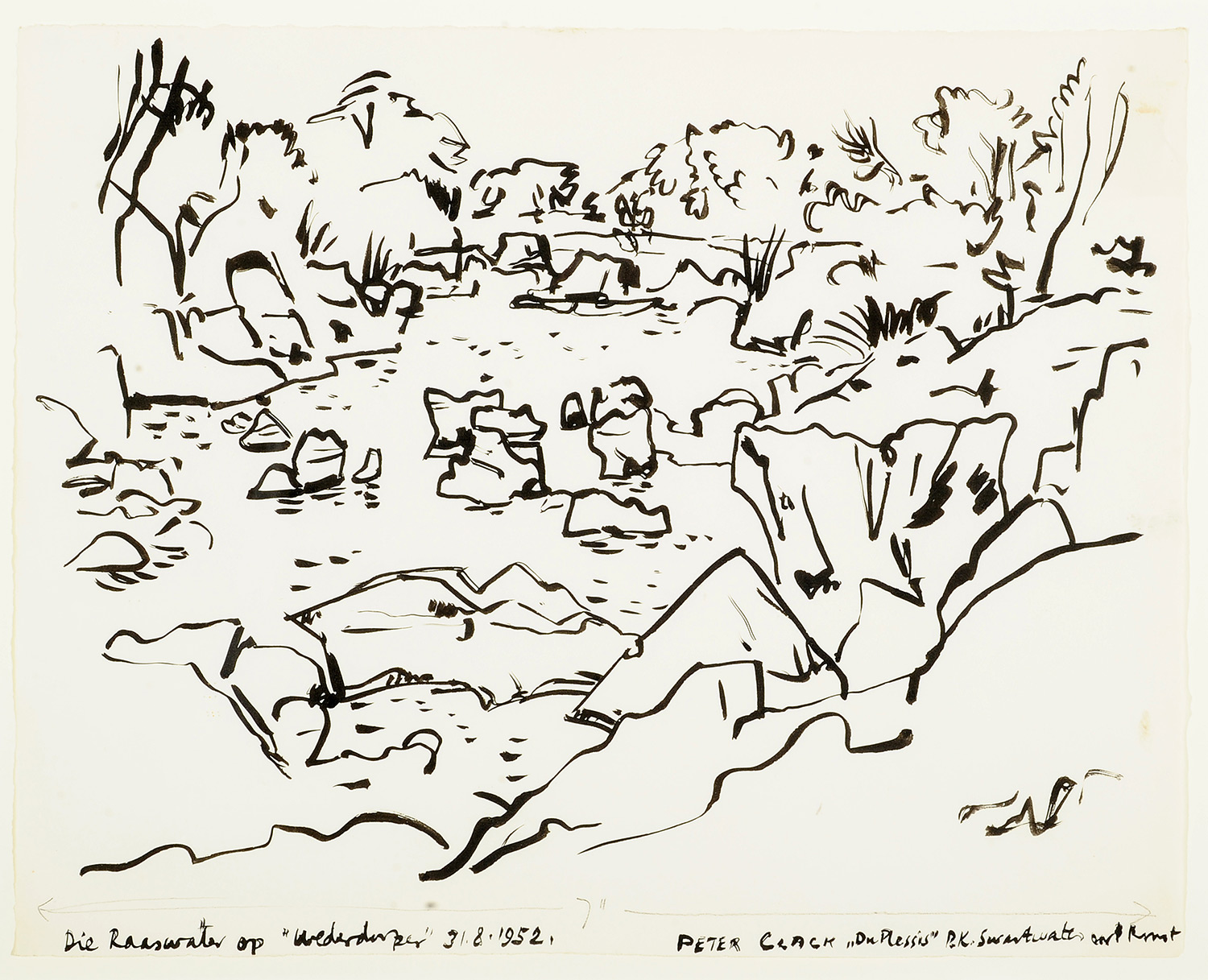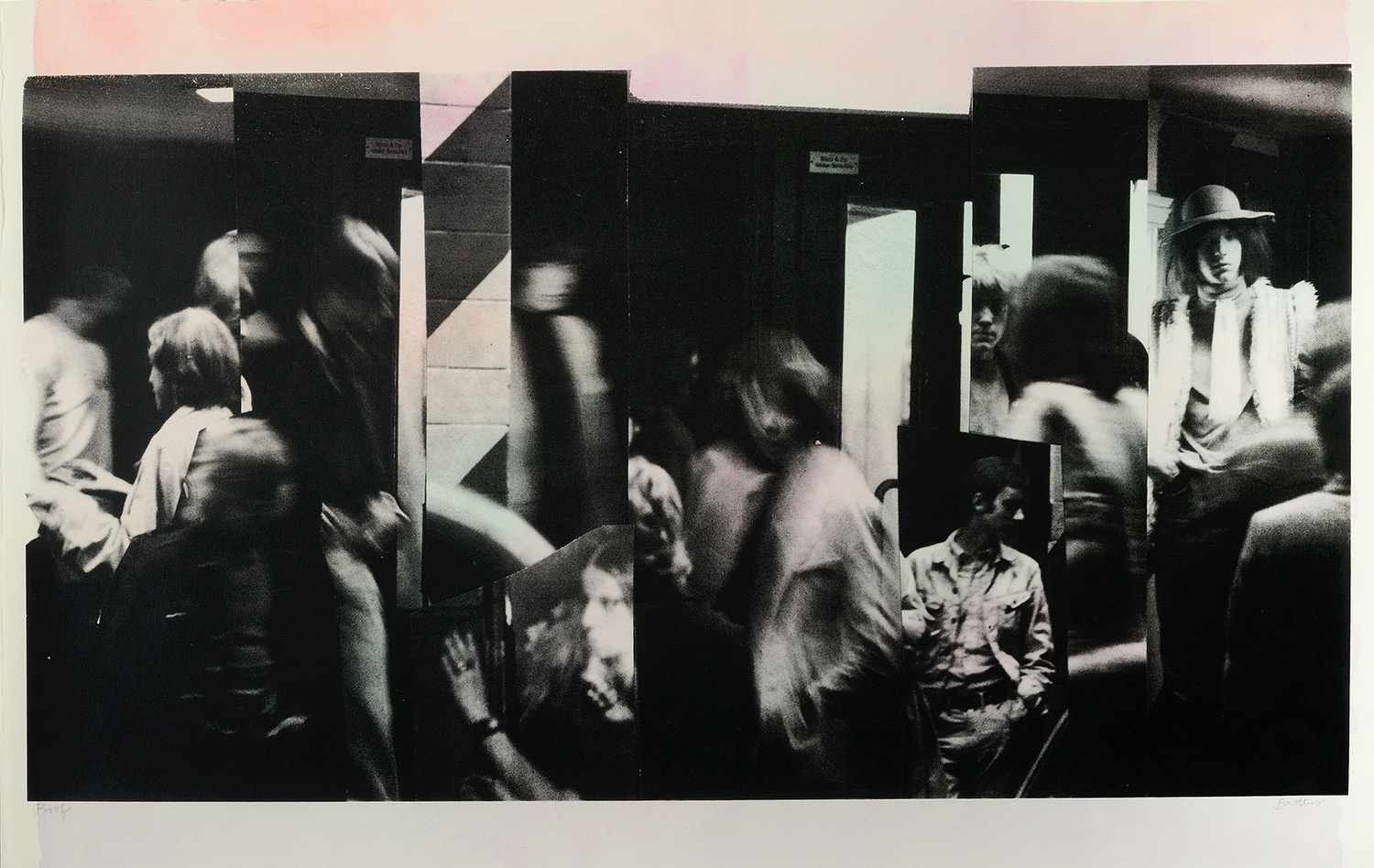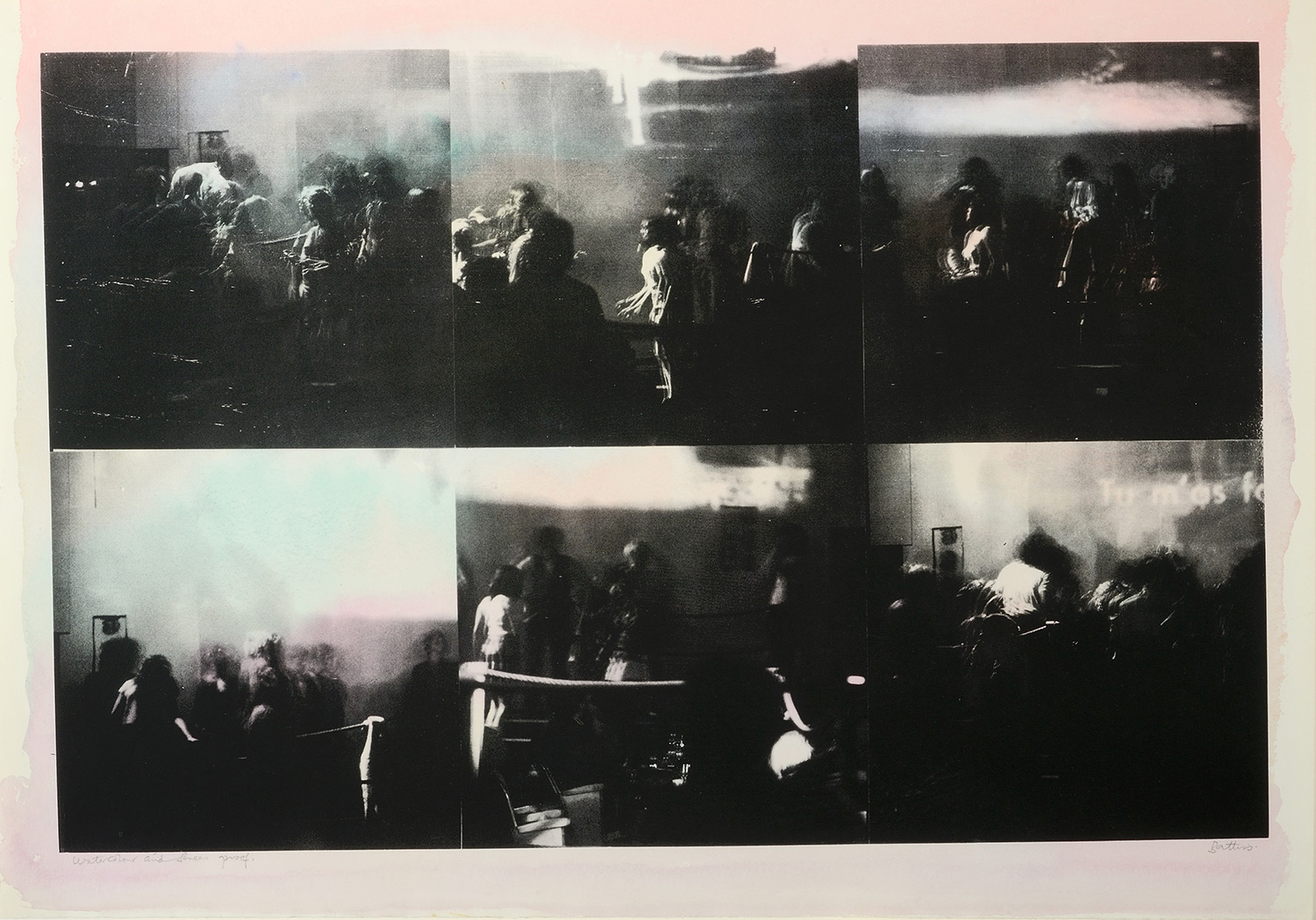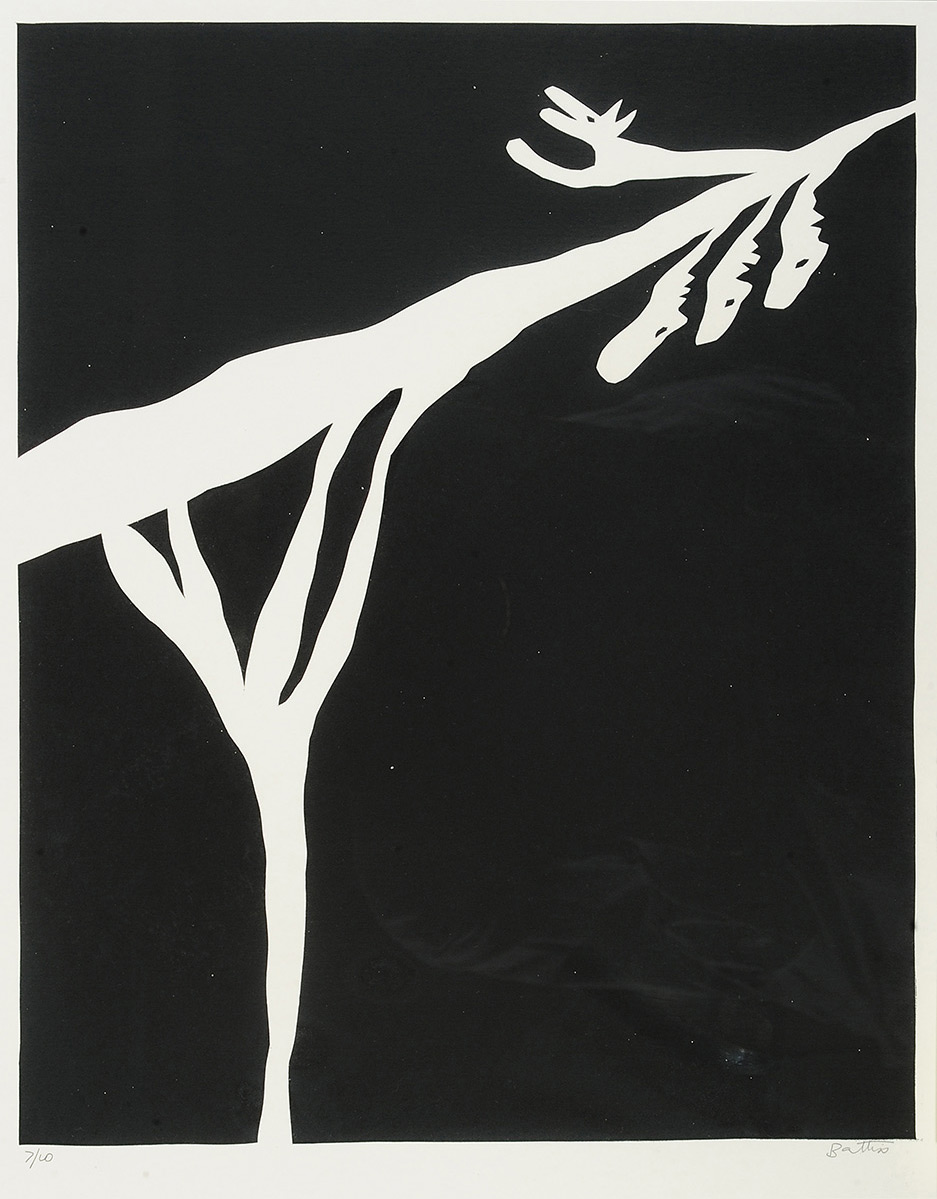Walter BATTISS (1906 – 1982)
Banana Boy
1973
screen print
edition 5/30
41 x 62 cm
Walter Battiss’s erotic artworks were an outcry against the prudish establishment that was prevalent in South Africa during the 1960s and 1970s. These works might read as playful and humorous today, but they were not viewed in that way by the South African public when they were fist exhibited. An exhibition of Battiss’s Orgy silkscreen prints and other erotic drawings was closed down by the police after complaints from the public in the mid 1970s.
Battiss was deeply committed to the concept of personal freedom and despised nothing more than censorship. In March 1968, he came to the defence of a young artist Chris van der Berg, whose exhibition was cancelled by… Continue Reading
Creation of Man and Woman
year unknown
print
edition 12/25
42 x 57 cm
Walter Battiss’s erotic artworks were an outcry against the prudish establishment that was prevalent in South Africa during the 1960s and 1970s. These works might read as playful and humorous today, but they were not viewed in that way by the South African public when they were fist exhibited. An exhibition of Battiss’s Orgy silkscreen prints and other erotic drawings was closed down by the police after complaints from the public in the mid 1970s.
Battiss was deeply committed to the concept of personal freedom and despised nothing more than censorship. In March 1968, he came to the defence of a young artist Chris van der Berg, whose exhibition was cancelled by… Continue Reading
Friends
year unknown
colour screen print
edition 25/45
45 x 38 cm
Both screenprints, Untitled (foot and bird) and Friends, feature strikingly bold, uncluttered surfaces that capture the beauty of the linear as well as the playfulness for which Battiss is renowned. There is a quiet meditative quality to these peaceful, uplifting works.
Orgy II
1973
screenprint
43.5 x 60 cm
Walter Battiss’s erotic artworks were an outcry against the prudish establishment that was prevalent in South Africa during the 1960s and 1970s. These works might read as playful and humorous today, but they were not viewed in that way by the South African public when they were fist exhibited. An exhibition of Battiss’s Orgy silkscreen prints and other erotic drawings was closed down by the police after complaints from the public in the mid 1970s.
Battiss was deeply committed to the concept of personal freedom and despised nothing more than censorship. In March 1968, he came to the defence of a young artist Chris van der Berg, whose exhibition was cancelled by its sponsor Saambou Nasionale Bouvereninging in Pretoria a day before its… Continue Reading
Untitled (Foot on Bird)
date unknown
screen print
edition 6/8
50 x 40 cm
Both screenprints, Untitled (foot and bird) and Friends, feature strikingly bold, uncluttered surfaces that capture the beauty of the linear as well as the playfulness for which Battiss is renowned. There is a quiet meditative quality to these peaceful, uplifting works.
BIOGRAPHY
Walter Whall Battiss was born in Somerset East, a Karoo town in the Eastern Cape.
After receiving his teaching diploma in 1933, he started working at the Park School in Turffontein, Johannesburg. In 1936, he was appointed art master at Pretoria Boys School, where he would work for most of the next 30 years.
Battiss became a founding member of the New Group; and the only member who had not studied in Europe. In 1938, he visited Europe for the first time and met Abbé Henri Breuil. He married Grace Anderson, a renowned art-educationalist, in 1940. It was at this stage that Battiss’s painting began to take on a hieratic, symbolist character.
While exhibiting a collection of South African art with the International Art Club in Italy in 1949, Battiss had his first meeting with Pablo Picasso and the Futurist Gino Severini. Both made strong impressions on him and the influence of their work can be seen in his art.
In 1955, calligraphic forms made an appearance in Battiss’s work, as well as animal and human abstractions. The influence of Ndebele beadwork in his art also became clear at this time, and he began to experiment with coloured woodcuts.
In 1962, Battiss began exhibiting numerous canvases using palette-knife colour mixing with graffito delineation of forms. Around this time, he took several trips to places from Central Africa to the Middle East.
Between 1966 and 1968, Battiss made several trips to Greece; and so began the influence of islands on his creative thinking. It was during this time that he published a hand-printed book of texts and serigraphs titled ‘Nesos’. By 1969, he was working on serigraphy with Chris Betambeau in London and, in 1970, he organised the first South African exhibition of serigraphs.
When Battiss retired from his position as Professor of Fine Arts at UNISA in 1971, a special issue of De Arte was published in his honour. In 1980, Battiss designed four stamps for the Botswana postal service. The Walter Battiss Museum opened in Somerset East the following year, and remains open today.


